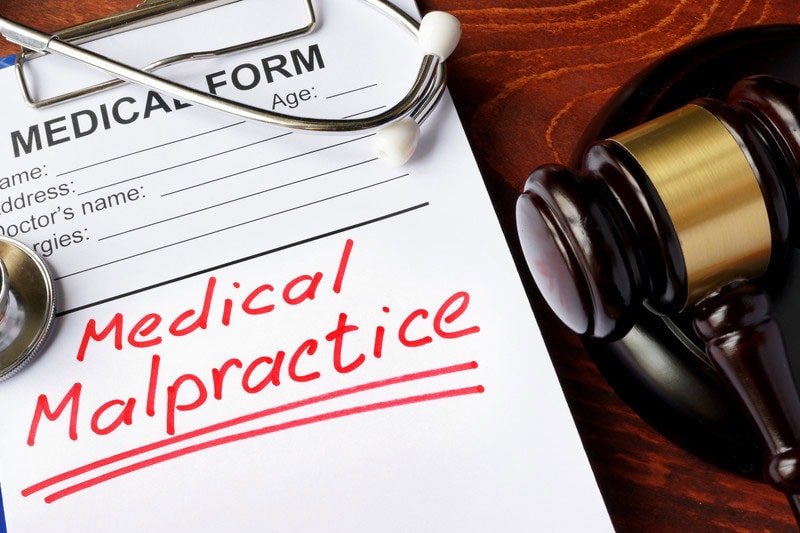Medical errors made by doctors lead to medical malpractice lawsuits that are quite distressing to all parties involved. A recent report referred to in a Lawyers.com article reveals that around 15% of all diagnosis-related medical malpractice claims involve radiologists. A radiologist may make a medical error, either due to a missed finding, by failing to review other imaging, or failing to detect an abnormality, or any other type of mistake that can have a negative impact on the patient’s health and course of treatment. This could give rise to medical litigation that would involve medical records review among other legal formalities.
The above mentioned report says that an analysis of closed claims by a Boston-based medical professional liability insurer showed that most of those claims involved an incorrect, or delayed diagnosis. Moreover, 80% of the claims against radiologists involved misinterpretations of clinical tests. According to the report, from 2013 to 2017, there were around 600 malpractice claims against radiologists. Wrong cancer diagnoses of breast, lung, ovarian and pancreatic cancer accounted for most of the claims involving diagnostic failures. After examining the claims, the researchers found many of the claims stemmed from lack of follow-up after an abnormal test result. Injuries of high severity can arise when a radiologist fails to identify an abnormality or fails to proceed with the appropriate tests.
More than 80% of the claims involving a wrong diagnosis resulted in permanent injuries or fatality. To avoid such errors and related health risks, the researchers recommend the following:
- Form a list of criteria that would specify whether a second radiologist should review a film.
- The criteria should include deadlines for completion and confirmation from the radiologist who is performing the second study.
- Vague or unclear language must be avoided.
- Checklists can be made to avoid certain cognitive biases and also to rely less on memory. An effective diagnostic checklist can ensure that all images are thoroughly studied, and there will be lesser possibility of missing a subtle or unexpected finding. Checklists can help avoid human error and improve the quality of healthcare.
Common Reasons for Radiology Errors
An article posted on applied radiology.com mentions the common reasons that give rise to medical malpractice lawsuits against radiologists, and also provides useful advice on avoiding such medical errors. Oversight of abnormalities or misinterpretation of radiology images most frequently lead to medical malpractice lawsuits. The reasons for these errors, according to the article, could be one of the following:
- Failure in detection
- Failure in interpretation
- Failure in communication of results
- Failure in suggesting appropriate follow-up action
These failures result from problems with visual perception, cognition errors in diagnostics, system errors such as those related to communication of significant findings, reading room lighting, very long shifts, or excessive workloads.
How to Avoid Costly Medical Errors
- To avoid such failures, radiologists should ensure that their reports are always timely so that they can play an active part in the patient’s healthcare.
- It is important to document any relevant verbal communication with the treating physicians.
- Another important thing to do is to convey any critical finding to the referring and/or responsible covering physician.
- The radiology report should include the date, time, and name of the person who receives this communication.
- Efficient, reliable mechanisms should be available to facilitate radiologist communication of such significant findings.
Now, 24/7 coverage of radiology services is available in most healthcare organizations, which has improved the timeliness of reports. Even so, if the appropriate subspecialist radiologist is not available to interpret specialty examinations after hours, it should be ensured that the level of the interpreting radiologist’s training and experience should be sufficient to the modality of the imaging being covered. As the article points out, a mammographer may have lesser experience than a fellowship-trained neuroradiologist in interpreting a CT scan or MRI of the brain. Therefore when possible a direct, or on-call subspecialist interpretation would be ideal.
Radiologists can minimize perception errors by taking time to interpret imaging studies, and not be in too much of a hurry. The physician should always be involved in establishing image quality. If required, the patient can be asked to return for repeat imaging to ensure that no significant finding is missed. Other measures to take to minimize radiology related errors and litigation are: have regular work breaks, look away from the computer screen at least twice an hour, make sure that the lighting is optimal, and optimize workstation ergonomics. Reducing the duration of shifts and study volume associated with after-hours coverage could also help minimize diagnostic errors resulting from increased physician fatigue.
Medical malpractice litigation associated with radiology involves processes such as medical chart review and medical claims review. When a patient seeks an attorney’s help concerning a radiology medical malpractice case, the first step is retrieving copies of all of the films and having them reviewed. A medical chart review company provides the necessary assistance for attorneys in this regard. The reviews provided enable the attorney to better understand the impact of the medical error on the patient’s outcome.




